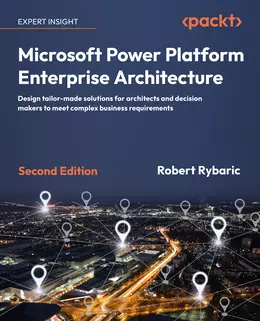Microsoft Power Platform Enterprise Architecture, Second Edition

eBook Details:
- Paperback: 534 pages
- Publisher: WOW! eBook; 2nd edition (January 31, 2023)
- Language: English
- ISBN-10: 1804612634
- ISBN-13: 978-1804612637
eBook Description:
Microsoft Power Platform Enterprise Architecture, 2nd Edition: This book is for enterprise architects and technical decision makers who are faced with the task of designing a Microsoft Power Platform solution, and who would benefit from learning about solution architecture models, methodologies, and patterns for their projects.
Microsoft Power Platform Enterprise Architecture, Second Edition offers an array of architectural best practices and techniques for any forward-looking enterprise architect or decision maker who wants to know more about integrating solutions to serve growing business needs. With this book, you’ll learn about the tools available in the Power Platform suite and identify which are appropriate for your business. Then, you’ll integrate them seamlessly with various other Microsoft 365 and Azure components.
Unlike many other overwhelmingly long and unstructured resources, this book covers essential concepts using one concise yet practical example that is revisited throughout the book. You’ll develop the skills you need to architect, design, and manage a complex solution as you follow the journey of a fictitious enterprise customer as they enter the world of Power Platform. Throughout the book, you’ll discover how to combine the functionality of Microsoft Power BI, Power Automate, Power Apps, and Power Virtual Agents with various methodologies to effectively address application lifecycle management, security, and extensibility. You’ll also learn how to overcome common challenges in migrating data to and from Microsoft Power Platform using proven techniques.
- Understand various Microsoft Dynamics 365 CRM, ERP, and AI modules for creating Power Platform solutions
- Combine Power Platform capabilities with Microsoft 365 and Azure
- Find out which regions, staging environments, and user licensing groups need to be employed when creating enterprise solutions
- Implement sophisticated security by using various authentication and authorization techniques
- Extend Microsoft Power BI, Power Apps, and Power Automate to create custom applications
- Integrate your solution with various in-house Microsoft components or third-party systems using integration patterns
- Migrate data using a variety of approaches and best practices
By the end of this Microsoft Power Platform Enterprise Architecture, 2nd Edition book, you’ll have the strategic perspective of an enterprise architect, enabling you to make accurate architectural decisions for your complex Power Platform projects.